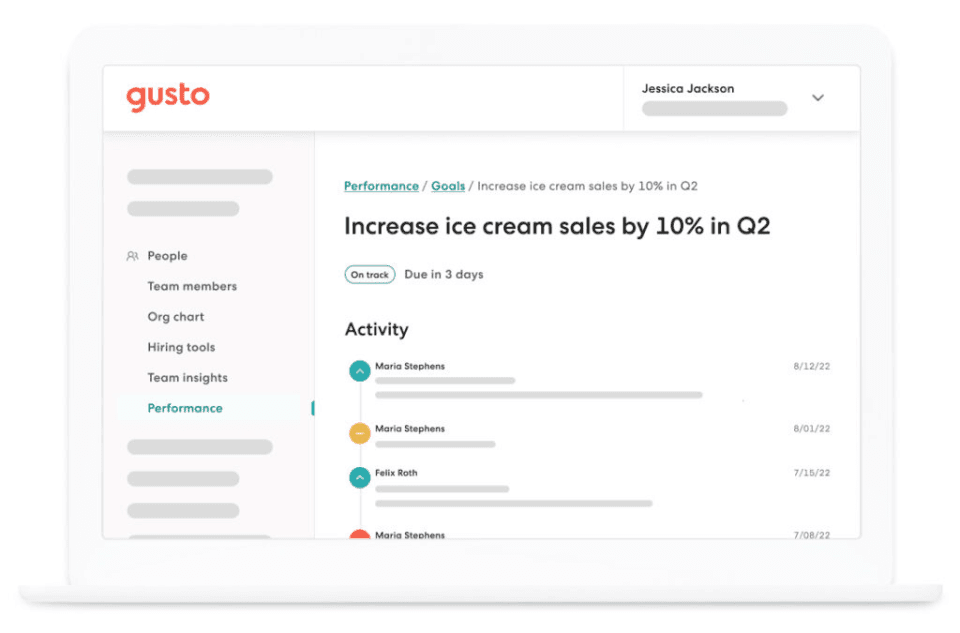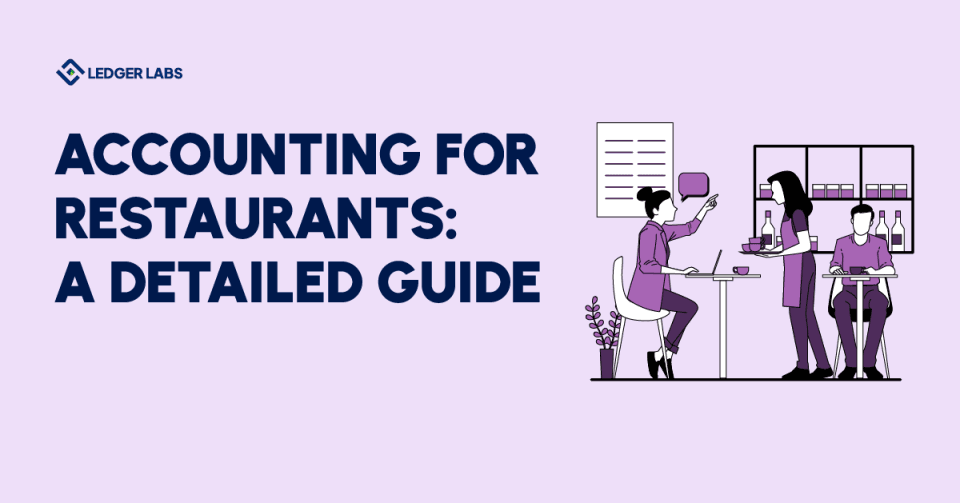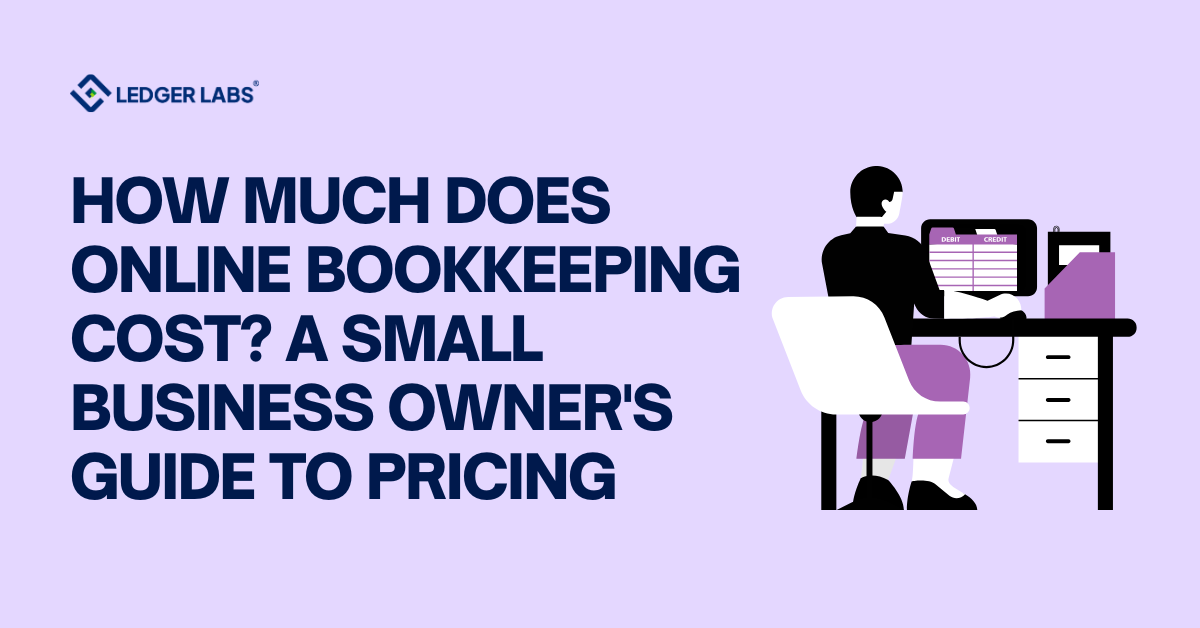Running a restaurant is a lot more than a regular job.
It’s about management of inventory, staff, and, of course, finances.
With paper-thin margins, the numbers can make or break you.
And yet, most restaurant owners treat accounting & bookkeeping services as a compliance task instead of the operational system it really is.
If your books aren’t clean, your decisions won’t be either. You won’t know if the kitchen is bleeding cost, if labor is outpacing revenue, or if your delivery orders are actually profitable. And by the time tax season arrives, it’s not cleanup, it becomes damage control.
This guide is designed for restaurant owners who want to stop reacting and start taking control.
You’ll find the systems, reporting structures, and accounting principles you need to keep your business under control, not just afloat.
- Prime costs, COGS, and labor should be tracked weekly to stay ahead of margin slippage. Waiting for the month-end is too late to fix operational issues.
- Accrual accounting gives a clearer picture of restaurant performance than cash-based reporting, especially when managing inventory, payroll timing, and multi-vendor purchasing.
- Daily reconciliation between POS and deposits catches issues like theft, processing errors, and discount misuse before they snowball into bigger financial problems.
- Tip compliance, FICA credits, and proper classification of service charges are critical for accurate payroll tax filings and avoiding costly IRS penalties.
Why Restaurant Accounting Leaves No Margin for Error?
Most industries can afford to operate with imprecise accounting.
Not restaurants!
Margins in the restaurant business average just 3% to 5% in the U.S., according to the National Restaurant Association.
A few miscategorized invoices or a month of inaccurate COGS tracking isn’t just a rounding error. It’s the difference between breaking even and bleeding out.
Restaurants deal with a perfect storm of financial complexity:
- High cash turnover and daily deposits
- Unpredictable labor schedules with tipped wages
- Spoilage, over-portioning, and inventory shrinkage
- Separate reporting for dine-in, delivery, and third-party platforms
- Seasonal fluctuations and vendor price creep
Without a structured accounting approach, these variables spiral quickly. And most accounting software tools don’t solve the problem; they just give you more ways to misreport the same numbers.
Cash vs. Accrual: Choose With Eyes Wide Open
By default, small restaurants often use a cash-based accounting system. It’s easier on the surface. But what looks simple can become misleading.
Let’s say you get a bulk food delivery on December 28 but don’t pay the invoice until January 3. On a cash basis, the COGS never appears in your December reports. But the food was used in the December service. So your December profitability looks inflated, until January shows a cost spike that doesn’t match sales.
Accrual-based accounting, by contrast, records revenue when it is earned and expenses when they are incurred. It provides a more accurate representation of financial performance over time.
For restaurants with multi-vendor setups, staff payroll cycles, and fluctuating weekly inventory, this is often the only way to obtain reliable data.
Cash-basis accounting may still be permissible for IRS reporting if you’re under $25 million in average annual gross receipts (per IRC Sec. 448). But for decision-making? Accrual wins.
Accounts Every Restaurant Needs to Track, Weekly
Strong restaurant accounting doesn’t start with just accounting software.
It starts with a chart of accounts that reflects how your restaurant really runs. Here’s what every U.S.-based restaurant should be tracking on a recurring basis:
- COGS – Food and Beverage, broken out separately
- Labor Costs, including hourly, salaried, and tipped wages
- Prime Costs (COGS + Labor), your most critical profitability metric
- Sales by Type, including dine-in, delivery, catering, and alcohol
- Daily Payment Mix, showing how much comes in via cash, credit cards, online apps, and third-party delivery platforms
- Discounts, Voids, and Comps, tracked by reason and staff member
- Overhead, including rent, insurance, licenses, and utilities
One of our clients, who is an upscale bar and grill in Austin, was showing stable gross revenue across three months. But when we broke down the payment mix and prime costs weekly, we uncovered that DoorDash commissions and inconsistent labor scheduling had reduced actual profit by over 14%. The accounting system wasn’t wrong. It just wasn’t structured enough to show the problem.
Labor and Payroll: The Compliance Trap You’re Probably Underestimating
Restaurants don’t just run payroll.
They manage a legal maze, federal tipped wage rules, minimum wage fluctuations by state, FICA tip credits, overtime compliance, and tip pooling.
Fail to report tips properly, and you risk triggering IRS scrutiny or forfeiting valuable credits. In the U.S., employers who meet the requirements can claim a credit for FICA taxes paid on reported tips, often worth thousands per year. But you only get it if tips are tracked and reported correctly.
We’ve helped multiple restaurants recover this credit by cleaning up their tip allocation records, reconciling POS reports with payroll logs, and filing amended Forms 941 where necessary.
For every tipped employee, your payroll system needs to:
- Track total tips (declared and card-based)
- Allocate pooled tips per IRS guidelines
- Adjust base pay against federal and state tipped minimums
- Separate service charges from gratuities (these are not treated the same for tax purposes)
Using restaurant-specific payroll providers like Gusto or Push can help.

But integration with your accounting system is critical; otherwise, gross payroll data looks right but doesn’t map to actual liability.
How To Track Inventory and COGS Effectively?
The difference between your theoretical and actual food cost often hides in the cooler, spoiled produce, over-portioning, staff mistakes, or untracked waste.
And if you’re only doing inventory monthly, you’re spotting issues 30 days too late.
Weekly inventory counts give you control. They create a rolling cost of goods sold (COGS) calculation that reflects actual usage, not just what was purchased.
Here’s how we help our clients structure it:
- Break inventory down by category (e.g., proteins, dairy, alcohol, dry goods)
- Tag perishables vs. shelf-stable items
- Run weekly counts at closing with the same team, same method
- Calculate usage as: Starting Inventory + Purchases – Ending Inventory
- Match usage to sales volume to check consistency
How To Track Sales Reconciliation?
Your POS says one thing. Your bank deposits say something else. And if you’re not reconciling that daily, you’re running blind.
Restaurants operate with high transaction volume and fragmented payment sources
This includes cash, cards, online orders, tips, comps, refunds, and third-party apps. And every one of those sources creates a reporting gap.
The goal of reconciliation isn’t just balancing books. It’s detecting fraud, theft, under-reporting, and fee leakage in real-time.
Here’s what daily reconciliation should cover:
- Compare POS sales reports to actual bank deposits
- Break out gross sales, refunds, discounts, and taxes
- Track third-party platform commissions separately
- Match card batch settlements to processor reports
- Review tip payouts and verify against payroll entries
We helped a quick-service concept with four locations detect over $10,000 in card-processing overcharges simply by flagging inconsistent net settlements. Their POS was configured correctly, but no one was checking what was hitting the bank.
At Ledger Labs, our accounting process includes a daily-close model. Every day is closed, documented, and reconciled before the next begins. It’s the only way to stay accurate at scale.
Sales Tax, Payroll Tax, and 1099 Compliance
Restaurant owners often underestimate how many different tax obligations they’re juggling.
1. Sales Tax
Sales tax rules for restaurants vary by state (and even by municipality).
In some jurisdictions, food is taxed differently depending on whether it’s consumed on-premise or taken to-go. Alcohol often has separate rates. Service charges may be taxable. Tips generally aren’t.
Failing to apply the correct rate, or worse, misreporting collected tax, can lead to audits that go back years. Your POS should calculate tax correctly, but your accounting system has to reconcile that amount monthly.
That means reviewing:
- Total taxable sales
- Tax collected vs. tax owed by location
Exempt sales and manual overrides
2. Payroll Tax
Restaurants are subject to the same federal and state payroll tax obligations as any other business, plus the added layer of tip income reporting.
If you’re not filing Form 8027 annually or if you’re underreporting cash tips, you risk penalties.
Quarterly filings (Form 941) must reconcile with year-end W-2s and tip records.
If your staff includes contractors, freelance chefs, marketing consultants, cleaning vendors, you also need to file 1099-NEC forms by January 31.
We recommend creating a pre-Q4 checklist each year to identify any service vendors or cash-based payouts that may trigger reporting.
Using Restaurant Accounting to Drive Real Decisions
Most restaurant owners don’t need more data. They need the right data, structured and delivered consistently.
1. Weekly Prime Cost Report
Your prime cost, COGS plus labor, is your most actionable metric.
If it crosses 65% of total sales, you’re in dangerous territory. Weekly tracking shows whether that movement is seasonal, operational, or structural.
2. Revenue Per Labor Hour
This shows how much each labor dollar generates. If one shift consistently underperforms, the issue isn’t scheduling. It’s efficiency.
3. Menu Profitability
Item-level reporting matched against COGS shows which dishes are driving margin and which ones just look good on Instagram.
Menu engineering should be based on actual financial performance, not gut instinct.
What Ledger Labs Does For Your Restaurant’s Accounting Process?
We start with structuring your numbers.
That means building a system where every daily sale, weekly purchase, tip payout, and tax obligation flows into a clean, reliable financial structure.
We work with restaurant owners who want decision-grade data, not just QuickBooks categories.
Our process includes:
- A customized chart of accounts built for restaurant logic
- POS and payroll integration with proper mapping
- Weekly inventory and COGS tracking procedures
- Real-time prime cost visibility
- Daily-close reconciliation
- Clean monthly financials backed by source documentation
- Tax prep handoff with no last-minute scrambles
We’ve helped fast-casual chains, fine dining groups, and multi-location franchises move from disorganized reporting to financial clarity, often in under 90 days.
Conclusion
Restaurant owners work harder than almost anyone else in business. But hard work doesn’t replace clear numbers. When your financial structure is fragmented, your decisions are largely based on guesswork. And guessing at scale is a dangerous habit.
Accounting isn’t just a compliance burden. It’s a strategic tool, one that helps you fix cost leaks, prepare for tax season, and confidently expand without losing control.
At Ledger Labs, we don’t offer generic bookkeeping.
We offer operational accounting built specifically for restaurant operators who want clarity, structure, and growth.
And to benefit from that, all you need to do is book a call with us, and we will walk you through the entire process of how we will fix and manage your restaurant’s numbers.












